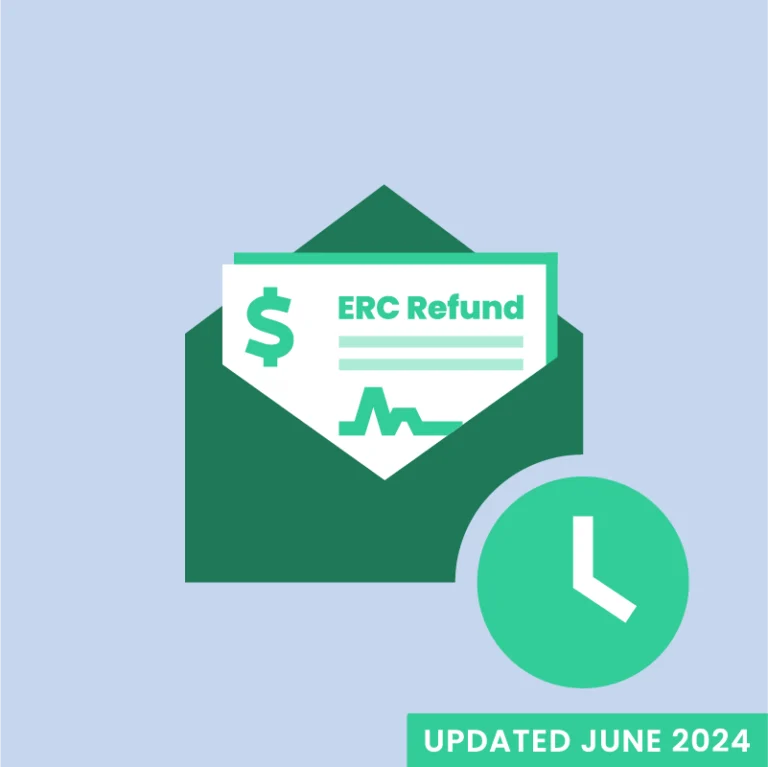When the COVID-19 pandemic took hold, life, and business as we knew it came to a screeching halt. For small businesses (which accounted for 47.1% of the American workforce in 2020) especially, the pandemic introduced a climate of existential uncertainty. The Coronavirus Aid, Relief and Economic Security (CARES) Act, a $2.2 trillion stimulus package, was the U.S. government’s response to this public health and economic crisis. Both the Paycheck Protection Program (PPP) and the Economic Injury Disaster Relief (EIDL) were established under the CARES Act. What is less known is that the Employee Retention Credit (ERC) program was also established under the CARES Act.
The ERC has become a popular topic in recent months. However, with so many legislative changes, lacking IRS guidance — and outdated or misstated information from third parties — there has also been a tremendous amount of confusion surrounding the program. Fortunately, the 1st Capital Team has prepared this comprehensive 101 guide to help employers better understand the ERC.
Key Takeaways About the Employee Retention Credit (ERC)
- The ERC is a refundable tax credit intended to encourage employers to keep their employees on payroll.
- Although the ERC program expired on September 30, 2021 (or December 31, 2021, for Recovery Startup Businesses), employers may still apply retroactively for the 2020 and 2021 tax years.
- For the 2020 tax year, the program allows employers to claim 50% of qualified wages paid per employee (for a maximum amount of $5,000.00 per employee for the entire year).
- Employers qualify for the 2020 tax year if (1) they experienced a full or partial suspension due to a government order, or (2) they experienced a 50% reduction of gross receipts compared to the same quarter in 2019.
- For the 2021 tax year, the program allows employers to claim 70% of qualified wages paid per employee (for a maximum amount of $7,000.00 per employee per quarter, and $21,000.00 for the entire year).
- Employers qualify for the 2021 tax year if (1) they experienced a full or partial suspension due to a government order, or (2) they experienced a 20% reduction of gross receipts compared to the same quarter in 2019.
- For Recovery Startup Businesses, the program allows employers to claim up to $50,000.00 in Q3 and Q4 of 2021 (for a maximum amount of $100,000.00 for the entire year).
- Employers are eligible to receive the ERC in addition to PPP loan(s).
What is the Employee Retention Credit (ERC), and How Do You Get It?
The ERC, also referred to as the Employee Retention Tax Credit (ERTC), is a refundable tax credit program established under the CARES Act. Its original purpose was to encourage employers to retain their employees and continue paying their paychecks (even if they were not working) during the COVID-19 pandemic.
The Maximum Value of the Employee Retention Credit in 2020 and 2021
For the 2020 tax year, eligible employers may claim up to 50% of employees’ qualified wages for a maximum credit of $5,000.00 per employee for the year.
For the 2021 tax year, eligible employers may claim up to 70% of employees’ qualified wages for a maximum credit of $7,000.00 per employee per quarter, or $21,000.00 per employee for the year.
For the 2020 and 2021 tax years, employers should include group health plan expenses when calculating qualified wages (even if no other wages were paid).
It’s Not Too Late to Qualify for the Employee Retention Credit in 2023
Employers may retroactively apply for the ERC by filing an IRS Form 941-X, Adjusted Employer’s Quarterly Federal Tax Return or Claim for Refund, or an applicable alternative (e.g., IRS Form 943-X or IRS Form 944-X).
Note: As of January 31, 2022, small business employers are no longer able to file a Form 7200 to request an advance payment of their Employee Retention Credit.
Legislative History of the Employee Retention Credit
First Introduced | Effective Date | Legislation | Updates to the ERC |
|---|---|---|---|
March 27, 2020 | March 13, 2020 | Coronavirus Aid, Relief and Economic Security (CARES) Act | Introduced the ERC Program |
December 27, 2020 | January 1, 2021 | Consolidated Appropriations Act (CAA) | Extended the ERC Program to June 30, 2021 Enabled Paycheck Protection (PPP) Loan Recipients to Apply Expanded the Maximum ERC Amount to $7,000.00 Per Employee Per Quarter Increased the Defined Size of a Small Business Employer to 500 Lowered the Threshold for the Reduction of Gross Receipts Qualification to 20% |
March 11, 2021 | April 1, 2021 | American Rescue Plan (ARP) Act | Extended the ERC Program to December 31, 2021 |
November 15, 2021 | September 30, 2021 | Infrastructure Investment and Jobs Act (IIJA) | Removed the Fourth Quarter of 2021 from the ERC Program (for Most Employers), and Removed a Condition of Eligibility for Recovery Startup Businesses |
December 7, 2021 (to House of Representatives) / February 10, 2021 (to Senate) | Pending | Employee Retention Tax Credit Reinstatement Act (ERTCRA) | Proposal to Reinstate the Fourth Quarter of 2021 to the ERC Program |
The Repeal of the Employee Retention Credit
The passage of the Infrastructure Investment and Jobs Act (IIJA), also referred to as the “Instructure Bill,” eliminated most employers’ ability to claim the ERC for wages paid after September 30, 2021. The maximum ERC amount has subsequently been reduced from $28,000.00 to $21,000.00 for 2021.
The only exception applies to Recovery Startup Businesses that may still claim the ERC in the fourth quarter of 2021.
recovery startup business
noun.
A recovery startup business is a business that was started after February 15, 2020, with gross receipts of less than $1-M.
The Employee Retention Tax Credit Reinstatement Act (ERTCRA)
Introduced to the House of Representatives (H.R.6161) on December 7, 2021, and the Senate (S.3625) on February 10, 2022, the ERTCRA aims to reinstate the fourth quarter of 2021 for the ERC program.
Qualifications for the Employee Retention Credit in 2020 and 2021
Qualifications for the ERC are largely dependent on the time period in question.
For March 13, 2020, through December 31, 2020, employers must have carried on a trade or business, or a tax-exempt organization that:
- experienced a full or partial suspension due to a COVID-19-related government order,
- or experienced at least a 50% reduction in gross receipts compared to the same calendar quarter in 2019.
Employers may also qualify if they experienced a supply chain disruption. For a supply chain disruption to apply, the employer’s suppliers must have experienced a full or partial suspension from a COVID-19-related government order such that:
- the supplier’s ability to deliver critical goods to the employer was impacted,
- the employer was unable to source the critical goods from an alternative supplier,
- and the consequence(s) of not receiving the critical goods were significant to the employer’s operations.
Government entities, state entities, and political subdivisions are not eligible for the 2020 ERC.
For January 1, 2021, through September 30, 2021, employers must have carried on a trade or business, or a tax-exempt organization that:
- experienced a full or partial suspension due to a COVID-19-related government order,
- or experienced at least a 20% reduction in gross receipts compared to the same calendar quarter in 2019.
For this period, employers that were not in business in 2019 may refer to the 2020 tax year for their comparison.
In rarer instances, employers may also qualify if they experienced a supply chain disruption.
Some section 501(c)(1) organizations, such as credit unions, colleges and universities, and entities whose principal purpose is to provide medical, or hospital care are eligible for 2021 ERC.
For October 1, 2021, through December 31, 2021, recovery startup businesses are the only employers eligible for the ERC.
Note: To claim the ERC for the fourth quarter of 2021, recovery startup businesses must comply with IRS Notices 2021-20, 2021-23, and 2021-49 addressing CARES Act provisions that are the same as those provided under Section 3134 of the Code.
Qualifying with The Suspension Test
The full or partial suspension qualification generally applies to employers that satisfy the suspension test. For an employer to satisfy the suspension test, the full or partial suspension must have occurred by order of a domestic government authority (federal, state, or local) due to COVID-19, and resulted in limited commerce, travel, or group meetings for commercial, social, religious, or other purposes.
The employer will also need to prove that their business was more than nominally impacted by the full or partial suspension and could not continue operating at a similar capacity through telework.
IRS Notice 2021-20 provides two safe harbors that employers may apply under specific circumstances:
- More than a Nominal Portion
- More than a Nominal Effect
The first safe harbor suggests that a partial suspension of an employer’s operations would qualify the employer for the ERC so long as the suspended components of the business represent “more than a nominal portion” of its operations defined as one of the following:
- gross receipts from the nominal portion of the business make up at least 10% of the employer’s total gross receipts (both determined using the gross receipts from the same calendar quarter in 2019), or
- hours of service performed by employees in that portion of the business make up at least 10% of the employer’s total employee service hours (both determined using the service hours performed by employees in the same calendar quarter in 2019).
The second safe harbor applies when no portion of an employer’s operations have been suspended but were subject to a government-ordered modification. The modification is considered to have a “more than nominal effect” if there is at least a 10% reduction in the employer’s ability to provide critical goods or services in the normal course of business.
Note: The ERC only applies to the portion of the quarter in which the business was suspended, not the whole quarter. The “More than a Nominal Portion” and “More than a Nominal Effect” safe harbors are not interchangeable. Each has its own unique applications with respect to satisfying the suspension test.
Qualifying with The Gross Receipts Test
The reduction of gross receipts qualification generally applies to employers that satisfy the gross receipts test. Recall that the thresholds for a reduction of gross receipts are 50% (compared to the same quarter in 2019) for the 2020 ERC and 20% (compared to the same quarter in 2019, or alternatively, the immediately preceding quarter in 2021) for the 2021 ERC.
Additional Considerations
The CARES Act prohibits employers from receiving the ERC for wages that have already been applied to other tax credit programs, including the Families First Coronavirus Response Act (Phase 2), and the Employer Credit for Paid Family and Medical Leave under Section 45S of the Internal Revenue Code. Wages paid to family members of the owner, owners with 50% or more ownership, and employees that were granted a Work Opportunity Tax Credit (WOTC) are also prohibited from being used for the ERC.
The CAA prohibits employers from receiving the ERC for wages that have already been applied to the Research Activities Credit, the Indian Employment Credit, the Credit for Employer Differential Wage, and the Empowerment Zone Employment Credit.
How to Calculate the Value of Your Employee Retention Credit Claim
Calculating the ERC can be challenging.
- Confirm that the business had employees on payroll between March 13, 2020, and September 30, 2021 (or December 31, 2021, if a Recovery Startup Business).
- Establish whether the business satisfies the suspension test for a full or partial suspension.
- Establish whether the business satisfies the gross receipts test for a reduction of gross receipts.
- Calculate the business’s estimated ERC amount for each qualifying quarter. Be sure to include all qualified wages and health plan expenses.
- Submit an ERC application or schedule an ERC consultation with 1st Capital Financial.
Employer Size on the Employee Retention Credit
A common misconception is that employers’ size is a determinant of eligibility. This isn’t true. “Small” and “large” classifications are simply a determinant of qualified wages. In most cases, these classifications are based on the number of full-time employees an employer averaged in 2019.
For the 2020 ERC, an employer is considered a small business employer if they averaged 100 or fewer full-time, W2 employees in 2019. Small business employers may include all paid wages and some health care expenses in the ERC claim. On the other hand, large business employers (i.e., those that averaged more than 100 full-time, W2 employees in 2019) may only include wages paid to employees that were not working and a proportionate amount of health care expenses.
For the 2021 ERC, an employer is considered a small business employer if they averaged 500 or fewer full-time, W2 employees in 2019. Once more, small business employers may include all paid wages and some health care expenses in the ERC claim. Large business employers (i.e., those that averaged more than 500 full-time, W2 employees in 2019) may only include wages paid to employees that were not working and a proportionate amount of health care expenses.
Aggregation Rule Applies
For the purposes of the ERC, an “eligible employer” includes all members of an aggregated group that are considered a single employer in accordance with section 2301(d) of the CARES Act. This means multiple businesses that share common ownership (e.g., parent-subsidiary, brother-sister controlled group, or a combined group of corporations) are treated as a single employer when assessing:
- whether a trade or business has been fully or partially suspended,
- whether the employer has a significant decline in gross receipts,
- the number of average employees, and
- the calculation of qualified wages.
full-time employee
noun.
As it relates to the Employee Retention Credit (ERC), a full-time employee is defined as a W2 employee that works a minimum of 30 hours per week, or 130 hours per month.
The Employee Retention Credit and the Paycheck Protection Program (PPP)
When the CARES Act was originally introduced, employers were required to decide between filing for the ERC and applying for the PPP. The Taxpayer Certainty and Disaster Relief Act (Relief Act), an extension of the CAA, gave first- and second-draw PPP loan recipients the ability to also claim the ERC.
Note: Employers cannot claim the ERC for any wages that have been forgiven, or are expected to be forgiven, under the PPP.
Find Out If You’re Eligible for the ERC
You may be eligible for a payroll tax refund of up to $26,000.00 per employee in 2020 or 2021. This is money you’ve earned, brought to you by the company you trust. Submit an ERC application online to find out if you’re eligible or schedule an ERC consultation to learn more.



